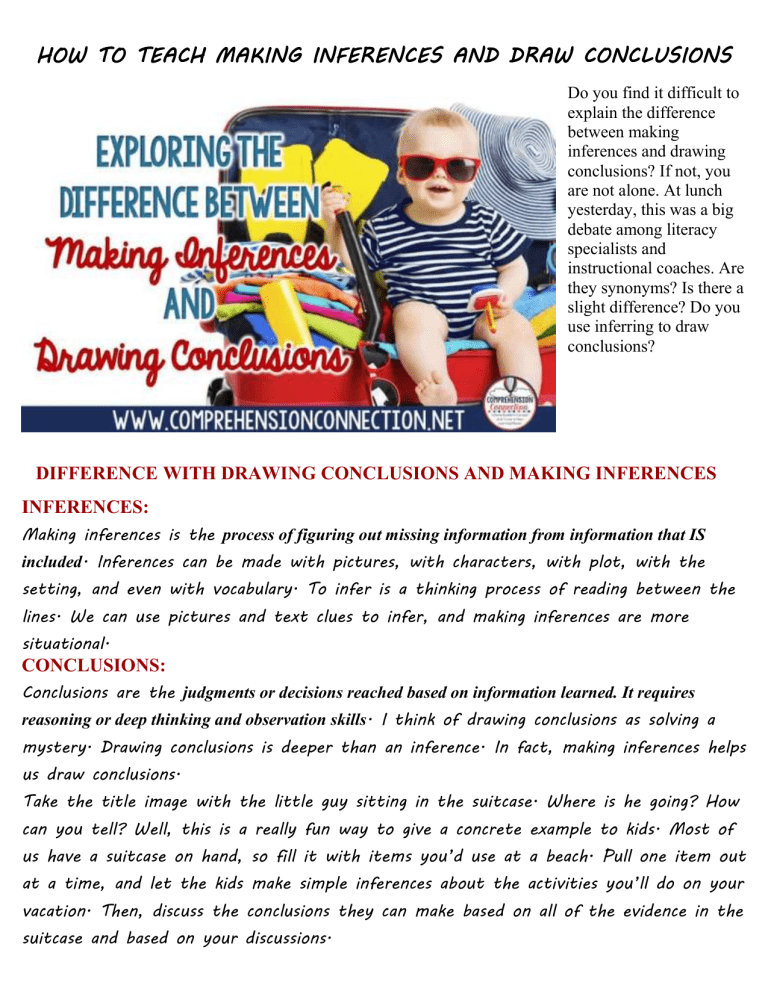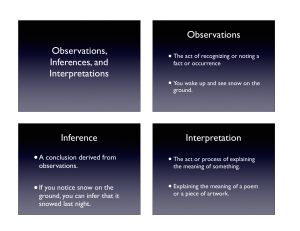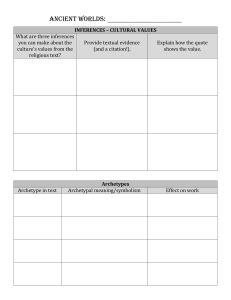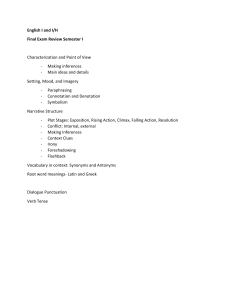
HOW TO TEACH MAKING INFERENCES AND DRAW CONCLUSIONS Do you find it difficult to explain the difference between making inferences and drawing conclusions? If not, you are not alone. At lunch yesterday, this was a big debate among literacy specialists and instructional coaches. Are they synonyms? Is there a slight difference? Do you use inferring to draw conclusions? DIFFERENCE WITH DRAWING CONCLUSIONS AND MAKING INFERENCES INFERENCES: Making inferences is the process of figuring out missing information from information that IS included. Inferences can be made with pictures, with characters, with plot, with the setting, and even with vocabulary. To infer is a thinking process of reading between the lines. We can use pictures and text clues to infer, and making inferences are more situational. CONCLUSIONS: Conclusions are the judgments or decisions reached based on information learned. It requires reasoning or deep thinking and observation skills. I think of drawing conclusions as solving a mystery. Drawing conclusions is deeper than an inference. In fact, making inferences helps us draw conclusions. Take the title image with the little guy sitting in the suitcase. Where is he going? How can you tell? Well, this is a really fun way to give a concrete example to kids. Most of us have a suitcase on hand, so fill it with items you’d use at a beach. Pull one item out at a time, and let the kids make simple inferences about the activities you’ll do on your vacation. Then, discuss the conclusions they can make based on all of the evidence in the suitcase and based on your discussions. EXAMPLES OF MAKING INFERENCES WHAT WE INFER: In this example, the facts we see are that the sky is cloudy, the ground is wet, and the umbrella is inverted. These facts indicate that it’s rainy because the ground’s wet and because she has an umbrella. We can infer that it is windy based on the fact that the man is holding on to the woman and because the umbrella is inverted. WHAT WE CONCLUDE: From this same photo, you could also gather clues for a conclusion. You might wonder, “How will the weather impact the couples plans later in the day?” The couple has plans to go hiking. Well, we’d conclude that they’ll cancel their plans because it will be muddy and impossible to hike without having their shoes stuck in the mud. WHAT WE INFER: In this next example, the facts we see are that the the boys are playing on a slip and slide. They are wearing bathing suits, and water is flowing over the plastic sheet. These facts indicate that it must be warm and sunny because I see a glow over the boys, and they’re covered in water. I also infer that they are having fun since they are smiling and look happy. Finally, I infer that this cools them off since the water splashes up on them. WHAT WE CONCLUDE: Conclusions from this photo is that many children like to play on slip and slides in the summer because they cool you off, are fun, and work well with a group of kids. If it started to rain, we’d probably conclude that the boys would go inside. Why? Well, there might be a storm. It might also get slippery running on the grass. Another conclusion if rain moved in might be that the boys would prefer playing an indoor game. Why? Well, without the sun, it would get cooler and wouldn’t feel comfortable being wet in a bathing suit.



